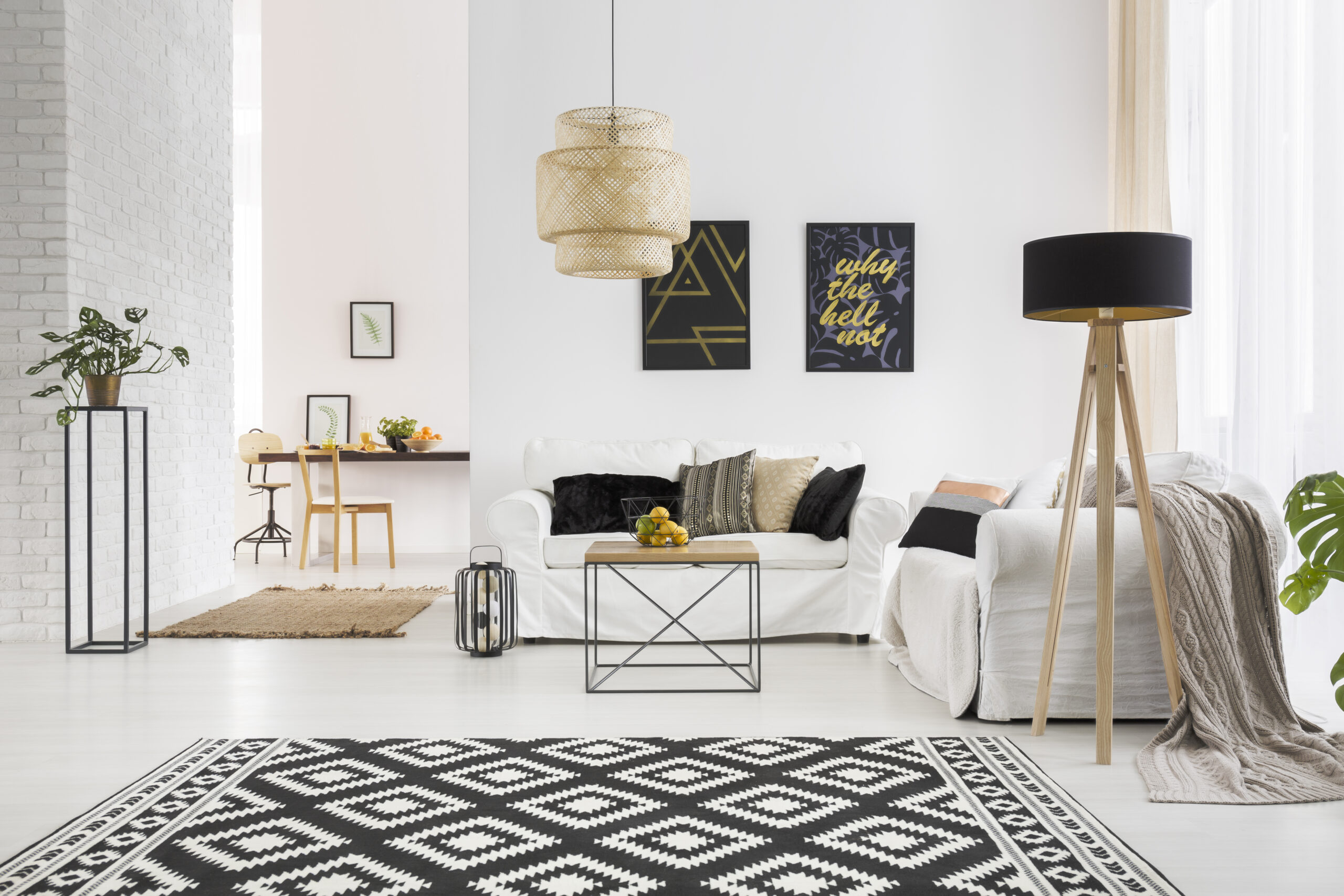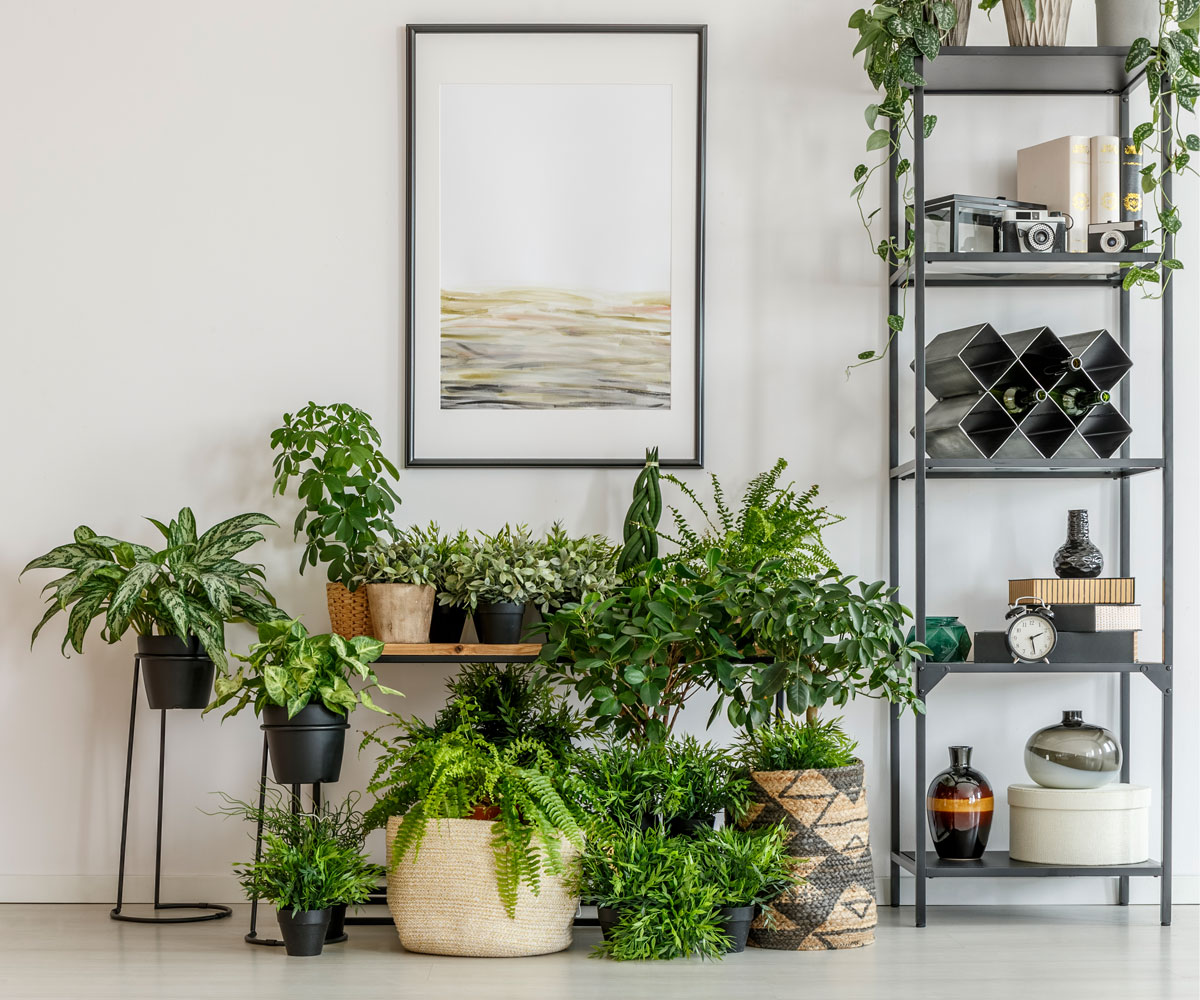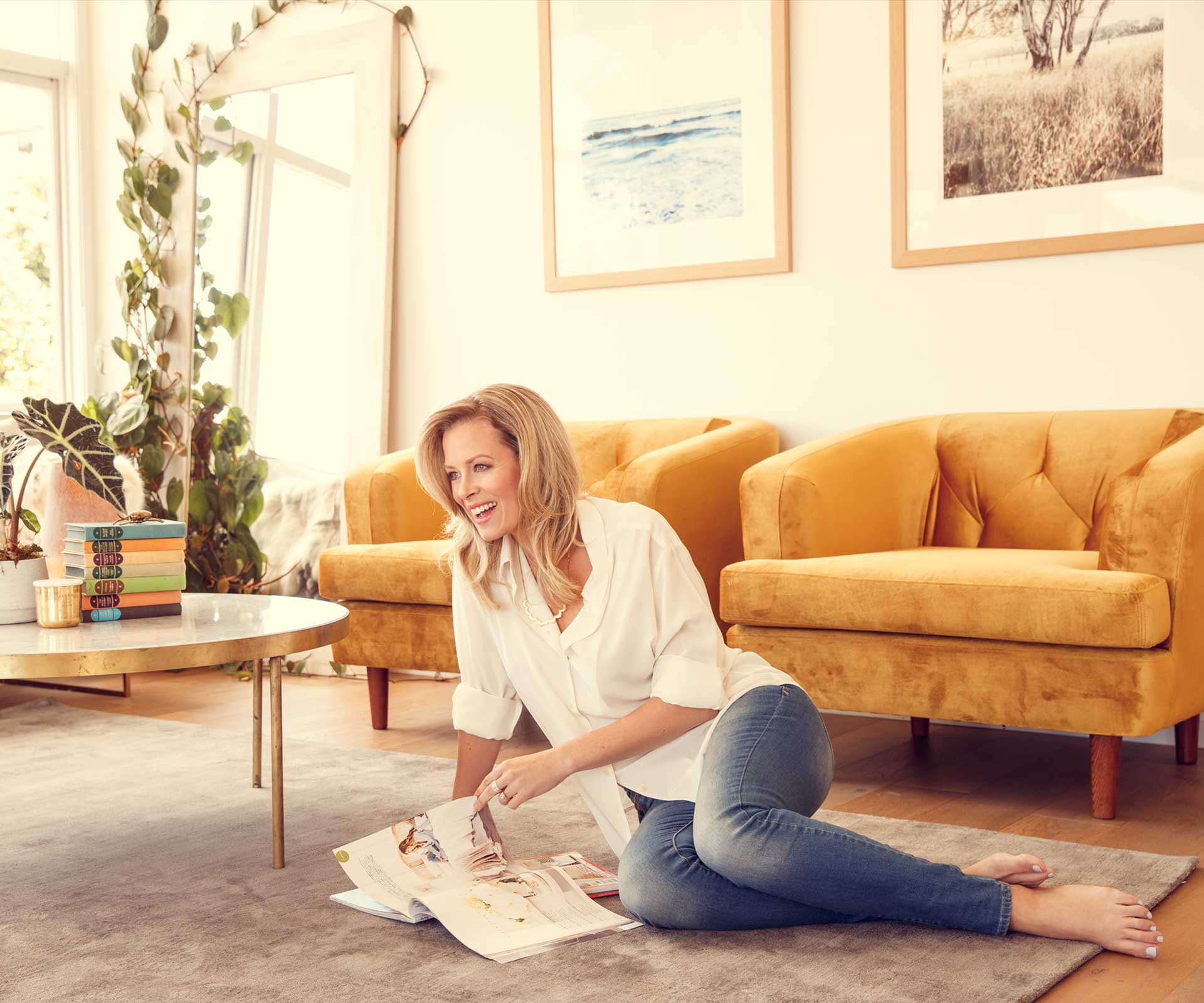It’s common knowledge that incorporating plants into an interior space can enhance well-being, but what about bringing other aspects of nature indoors? Could furnishing our homes with crystals or painting our walls in earth tones make us happier?
According to Psychology Today, just like going for a walk in the park or tending to plants, looking at a picture of a landscape can produce psychological benefits, reduce stress and improve concentration.
An article on the Positive Psychology Program website states that “physically being in nature will make you feel better than just looking at a picture, but even that small act triggers associations in your brain about past experiences you’ve had. Looking at pictures of nature allows you to feel some of those positive effects on a smaller scale”.
Plant power
Indoor plants have been shown to improve air quality and well-being and even to raise productivity. The act of looking after a plant can be beneficial for your mental health, too.
“There has been a massive resurgence in house plants over the last few years,” says Jasmine Edgar of online plant store Sill Life, based in Raglan. “They can create screens, fill spaces, soften lines. It is a great feeling to take a moment from a busy day to give your plants a mist and admire a new leaf.”
Start in a small way, by purchasing succulents which don’t need much watering, or renting plants and having people look after them for you.
If you’re ready for the next step, three fail-safe indoor plants (as recommended in The Little Book of Slow by Sally Wise and Paul McIntyre) are cast-iron plant (Aspidistra elatior), fruit salad plant (Monstera deliciosa) and wax flower (Hoya species).
Take a tint
A subtle way to bring nature into your home is through earth-inspired colours.
“Earthy and natural tones make a home instantly warm and welcoming,” says Wellington interior designer Wendy Bradford. She notes that ‘Greenery’, a “yellow-green shade that evokes the first days of spring” is Pantone’s Colour of the Year for 2017.
“Every colour on this planet is inspired by nature,” writes stylist Hans Blomquist in his book In the Mood for Colour.
He suggests looking for decor inspiration on your next outing. “The next time you leave your house, whether you are passing through familiar landscapes or visiting a different country, look around and marvel at the variety of the colours that surround you.”
Feels good
Natural textures and objects have a grounding effect on a space. Linen sheets, leather couches, woollen rugs and timber furniture add a natural look and feel, as do natural building materials.
“Brick adds texture andmakes a lovely backdrop,” says Wendy.
Karen Warman, Resene’s marketing manager, says, “There is a real trend towards bringing nature indoors at the moment. Authentic timber floors achieve this well.”
Have you noticed how kids and animals have a way of bringing nature into a house? Take a cue from them and collect sand to fill an ornamental vessel or forage for decorative objects such as branches, feathers, shells, pebbles, dried flowers or pine cones.
Produce is another often overlooked source of inspiration – a bright citrus branch placed in a vase, a string of garlic or chillies hung to dry, or a bowl of fruit or nuts can bring life to a room.

Crystal fever
Crystals are trending in the wellness scene and can easily be incorporated into an interior. According to advocates, an amethyst cluster on your desk can help to open your mind, while rose quartz can lend a nourishing, loving energy to your bedroom.
“Crystals have natural patterns in them that vibrate on a subtle level, sending out positive energy,” Luke Simon from New York wellness centre Maha Rose told Well+Good.
Fellow New Yorkers Rashia Bell and Elizabeth Kohn, of interior design firm The Cristalline, specialise in using crystals to create “energetically balanced spaces”.
“I am a huge fan of crystals and think they are the perfect combo with house plants,” says Jasmine from Sill Life. “There’s nothing like a big chunk of rose quartz with a glossy green leaf.”
Paint a picture
From photographic landscapes to handmade woollen wall hangings, there are plenty of ways art and accessories can reference nature.
“Items woven of natural fibres, like an oversize basket or something handmade such as pottery, add a bohemian touch. One trick is to not overuse them. A large basket or small and curated collections of unique pottery pieces are both nice touches,” interior designer Lauren Soloff told vogue.com.
Wallpaper and decals have advanced in recent years, enabling you to dedicate an entire wall to a favourite vista.
“There are some fabulous botanical prints available in fabric and wallpaper,” says Wendy. “Whether you use them on your walls or cushions, they will bring a dose of nature into your home.”
Stimulate the senses
Visual and tactile elements aren’t the only sensory aspects of nature you can bring inside. Scent and sound can be incorporated in subtle ways via flowers, essential oils or candles. Experiment with water features or recorded nature sounds, or simply open a window to let birdsong in.
“There is a growing interest in sensory design,” says Amanda Talbot in her book Happy: Creating joyous living spaces through design. “A unified approach, using smell, touch, taste and hearing as well as sight, will make a more creative, joyful and experiential space.”
If you are lucky enough to have one, she adds, “a fireplace is a powerful tool to activate all the senses – the warmth it provides, the sounds of it crackling, the smoky smell and the primal beauty of it”.
Light the way
“Natural daylight makes a room come alive,” says Wendy. “Whether it is natural or artificial light, lighting is a crucial aspect of interior design. It not only enhances the aesthetic appeal of a space, it creates mood and ambience.” She suggests these tips for enhancing the natural light in your home.
Keep your floors and walls light-coloured. White ceilings also enhance natural light.
Use light, sheer curtains instead of bulky, lined ones.
Use mirrors to reflect light. Hang them adjacent to or opposite a window.
Decorate with reflective and transparent materials such as wall tiles, glass table tops and metal accessories.
Allow maximum light into rooms by having glazed internal doors rather than solid ones.
Keep windows sparklingly clean and if you have a privacy window, in a bathroom for instance, consider using frosted glass.
Install a skylight to capture more light.

Starting your indoor jungle
Know your home – what are the conditions (light and temperature)?
Research – find a plant you like and check whether your house or workplace is suitable. How much sunlight will the plant need? How much water and how often? Will you need to feed it?
Once you establish the plant, keep an eye on it. If it survives the first few weeks with no ill effects, you have probably found the right location for it.
Most indoor plants die from over watering. Less water is better than too much. Avoid a designated watering day. Instead, feel the first few centimetres of soil with your finger. If it’s dry, water it. If it’s damp, don’t.
Find quirky spots in your home that might host indoor plants, such as a row of tiny pots on a narrow window ledge. Just be mindful of the conditions the plants require.
Plants can get sick – note the problem and seek the advice of your local nursery, a gardening book or a specialist website to help find a solution. Magazines and TV programmes can offer helpful tips on plant care.
Sometimes plants die; it happens. Toss it out and try something else.
Don’t give up!
Extract from The Little Book of Slow by Sally Wise and Paul McIntyre. Published by ABC (HarperCollins).


